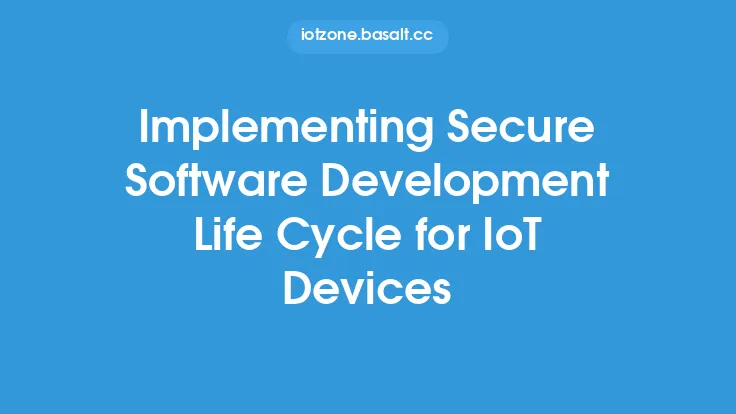The increasing number of Internet of Things (IoT) devices has led to a growing concern about the security of these devices. One of the most effective ways to secure IoT devices is through the use of encryption methods. Encryption is the process of converting plaintext data into unreadable ciphertext to protect it from unauthorized access. In the context of IoT devices, encryption is used to protect the data transmitted and received by these devices.
What is Encryption?
Encryption is a cryptographic technique used to secure data by transforming it into an unreadable format. This is done using an encryption algorithm and a secret key. The encryption algorithm is a set of instructions that defines how the data is to be transformed, while the secret key is used to control the transformation. The resulting encrypted data can only be decrypted using the corresponding decryption algorithm and secret key.
Types of Encryption
There are two main types of encryption: symmetric key encryption and asymmetric key encryption. Symmetric key encryption uses the same secret key for both encryption and decryption. This type of encryption is fast and efficient but requires the secret key to be shared between the sender and receiver. Asymmetric key encryption, on the other hand, uses a pair of keys: a public key for encryption and a private key for decryption. This type of encryption is more secure than symmetric key encryption but is also slower and more computationally intensive.
Encryption Methods for IoT Devices
IoT devices require encryption methods that are lightweight, efficient, and secure. Some of the most commonly used encryption methods for IoT devices include:
- Advanced Encryption Standard (AES): AES is a symmetric key encryption algorithm that is widely used for securing IoT devices. It is fast, efficient, and secure, making it an ideal choice for IoT applications.
- Elliptic Curve Cryptography (ECC): ECC is an asymmetric key encryption algorithm that is well-suited for IoT devices. It offers a high level of security while requiring less computational power and memory than other asymmetric key encryption algorithms.
- RSA: RSA is an asymmetric key encryption algorithm that is widely used for securing IoT devices. It is secure but requires more computational power and memory than ECC.
Key Exchange and Management
Key exchange and management are critical components of encryption for IoT devices. Key exchange refers to the process of securely exchanging secret keys between devices, while key management refers to the process of generating, distributing, and revoking secret keys. Some common key exchange protocols used in IoT devices include:
- Diffie-Hellman key exchange: This protocol allows two devices to securely exchange secret keys over an insecure channel.
- Elliptic Curve Diffie-Hellman key exchange: This protocol is a variant of the Diffie-Hellman key exchange protocol that uses ECC.
Challenges and Limitations
While encryption is an effective way to secure IoT devices, there are several challenges and limitations to consider. These include:
- Computational power: IoT devices often have limited computational power, which can make it difficult to implement encryption algorithms that require a lot of processing power.
- Memory constraints: IoT devices often have limited memory, which can make it difficult to store and manage secret keys.
- Power consumption: Encryption algorithms can consume a lot of power, which can be a problem for IoT devices that are battery-powered.
- Scalability: As the number of IoT devices increases, the number of secret keys that need to be managed also increases, which can be a challenge.
Best Practices
To ensure the effective use of encryption for IoT devices, several best practices should be followed. These include:
- Using secure encryption algorithms and protocols
- Implementing secure key exchange and management protocols
- Using secure random number generators to generate secret keys
- Regularly updating and patching encryption software and firmware
- Using secure communication protocols such as Transport Layer Security (TLS) and Secure Sockets Layer (SSL)
Conclusion
Encryption is a critical component of IoT security, and there are several encryption methods that can be used to secure IoT devices. By understanding the different types of encryption, encryption methods, and key exchange and management protocols, developers and manufacturers can ensure that their IoT devices are secure and protected from unauthorized access. Additionally, by following best practices and considering the challenges and limitations of encryption for IoT devices, developers and manufacturers can ensure that their IoT devices are secure and reliable.





